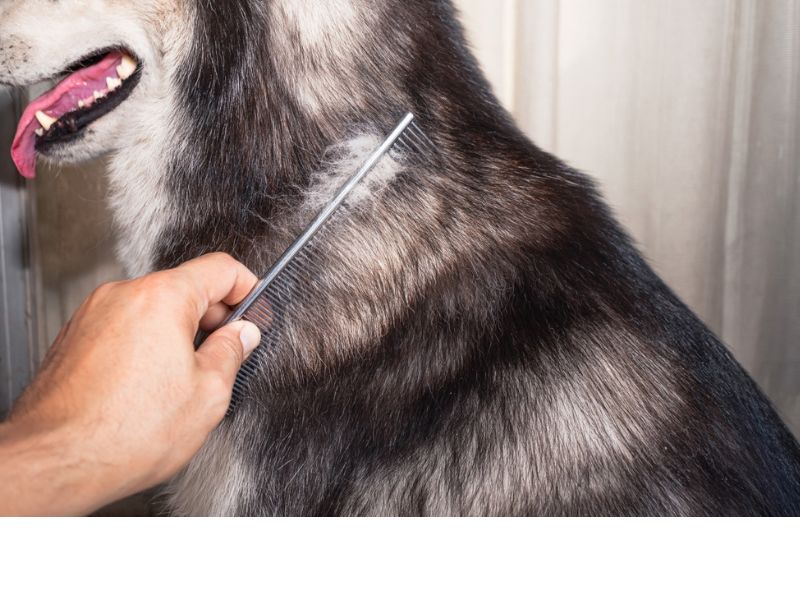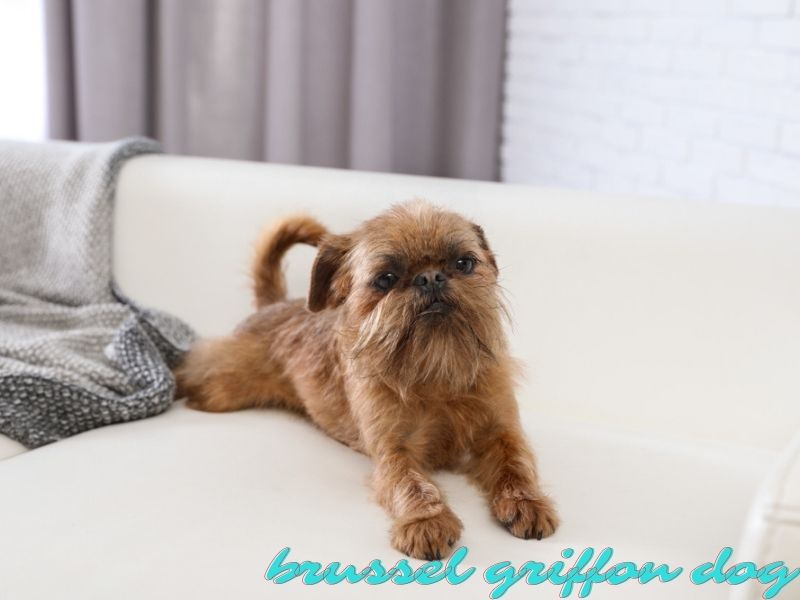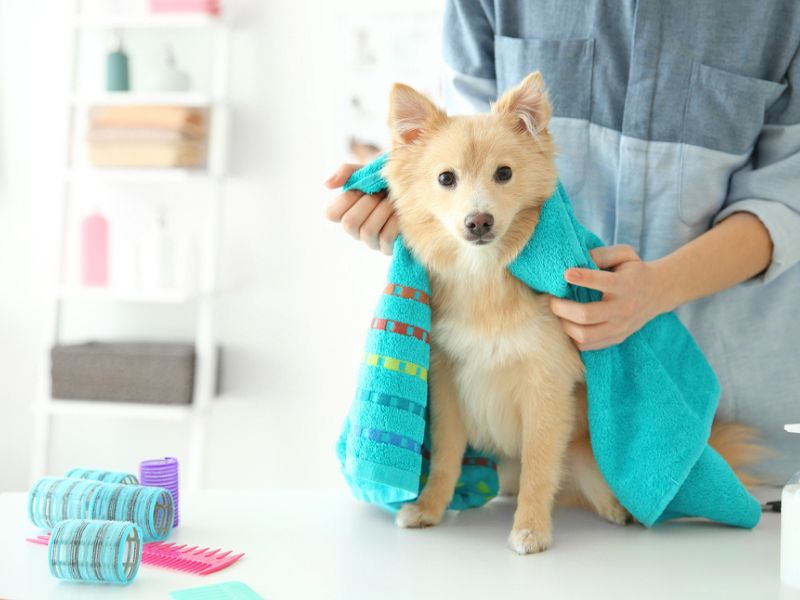Some people are allergic to pet fur and may sneeze, cough, and have runny noses if they come in contact with dog shedding. Also, dogs that shed more fur than others can leave your carpet, seats, and clothes in a mess. There are several ways to stop dog shedding. You may have heard about using coconut oil for dog shedding.
Depending on your dog’s size, add a quarter teaspoon to one tablespoon of coconut oil to the dog’s food. Secondly, apply and rub virgin coconut oil on your dog’s fur and skin thoroughly until she is hydrated. Coconut oil has 40% lauric acid and medium-chain triglycerides (MCT) to penetrate hair shafts and reduce shedding.
This guide will teach you how to use coconut oil for dog shedding and other alternative ways to stop the menace. You will also find a list of shedding dogs you can treat with coconut oil.

Does coconut oil help with dog shedding?
Coconut oil hydrates your dog’s skin and keeps it moisturized, reducing the shedding.
It is, therefore, best practice to keep a jar of coconut oil in your home if you have a dog.
The medium-chain triglycerides contained in coconut oil will treat shedding and offer other significant benefits to your dog. For instance, it can keep fleas and ticks away, boost your dog’s metabolism, and treat dermatitis.
There are several types of coconut oil you can use on your dog. Some, like virgin coconut oil, are more effective than refined coconut oil. Besides, the former is much more costly than the latter but is worth it.
Virgin coconut oil is an antioxidant with antibacterial properties. Not only will it help with dog shedding, but it will also eliminate staph bacteria and prevent cancer.
Dog shedding is a natural process that replaces dead and worn-out hair to keep a dog warm and give them a new look throughout its life.

Other factors influencing the amount of dog shedding include a dog’s breed, weather conditions, diet, and potential allergies.
However, sometimes dog shedding may mean an underlying health issue. For example, my dog Kristie was once infested with fleas and ticks. She scratched her fur so intensely that she began to have bald spots around her neck and belly.
When home remedies such as coconut oil yield no results, take your dog to a veterinarian as soon as possible.
Let’s shift focus to how you can use coconut oil for a dog that is shedding its fur.
How to use coconut oil for dog shedding
As I mentioned, there are two primary ways to treat your dog with coconut oil to stop their hair from falling off excessively.
Here is how to use coconut oil for dog shedding:
1. Add coconut oil to your dog’s food
Coconut oil has many applications. It can be ingested or applied to the skin. Eating coconut oil alongside a dog meal will work on your dog’s coat and skin and the dog’s entire body.
Remember that 86% of coconut oil is saturated fats. Therefore, you should not feed your dog too much coconut oil. According to the National Health Service, excess coconut oil can raise the bad cholesterol in your dog’s system, increase your dog’s weight, and their risk of heart diseases and stroke.
Feed small dogs and puppies 20 grams of food per kilogram of their body weight per day. Add ¼ or ½ a teaspoon of coconut oil to the dog food. If you have an adult or elderly dog, add one tablespoon of virgin coconut oil to the food.
Whereas feeding your dog coconut oil is essential to keep their hair and skin tough, shiny, and hydrated, maintain a regular exercise routine for your dog. That will help the dog burn extra calories and maintain a healthy weight. Most importantly, give your dog a balanced diet.
2. Apply and rub coconut oil all over your dog’s hair and skin

Dry skin is one of the most significant causes of dog shedding. Dry skin causes itching and triggers your dog to bite and scratch his body, thus plucking away healthy fur. It also encourages pests like fleas and ticks.
However, applying coconut oil to your dog like you would with a baby is crucial to give your dog peace and toughen his fur. There is no limit to how much coconut oil you can smear and spread over your dog. After all, you will rinse the excess oil anyway.
Before applying coconut oil to your dog’s coat, bath him thoroughly and use a pet shampoo brush to remove dead and stuck hair from his body. Bathe the dog using two cups of warm water, half a cup of vinegar, and a quarter cup of a nontoxic dish detergent.
Use a towel or a hairdryer to dry your dog after the bath.
Now rub coconut oil in your palms or warm the oil to give your dog a perfect smear. Massage every inch of your dog’s body using coconut oil and ensure that the skin and fur are oily.
Leave the coconut oil on the dog’s body for five minutes so it can get absorbed evenly into your dog’s skin. Rinse your dog without shampoo so the skin cannot dry again.
Repeat this every week to give your dog soft and healthy skin and coat.
Feeding your dog coconut oil and smearing him with the oil will not only toughen the hair follicles and reduce shedding but also improve your dog’s appearance. Not to mention, your dog’s immune system will be robust.
Alternative ways to stop dog shedding
Not that coconut oil is ineffective, but it is wise to employ multiple solutions when dealing with dog shedding.
Here are some ways to stop dog shedding:
1. Choose a dog breed that produces less dander

If you are yet to have a pet dog and want one that sheds less, choose a dog breed that produces less dander. Dog breeds are different. Some, like Labradors and German Shepherds, will leave behind a lot of fur in your house. Some small dogs that don’t shed much fur are Bolognese, Brussels Griffon, Coton De Tulear, and Maltese.
2. Increase your dog’s water intake
A dehydrated dog is most likely to have a dry coat, which can attract ringworms and other skin infections. Dry skin also irritates and increases your dog’s scratching episodes.
In that case, increasing your dog’s water intake is essential for stopping dog shedding. Know your dog’s weight and use it to measure the amount of drinking water for your dog.
Give your dog one ounce of drinking water for every pound of its weight. For example, my dog Kristie weighs 12 pounds, so I give her 1.5 cups of water daily. Adequate water will keep your dog’s skin hydrated and reduce dog shedding.
3. Proper nutrition
Proper nutrition for your dog can improve his skin and reduce shedding. Choose foods rich in Omega-3 fatty acids, such as Vitacost Plus. Give your dog a balanced diet of antioxidants, minerals, proteins, and vitamins. Apart from coconut oil, you can also supplement your dog’s diet with flaxseed or olive oil to stop shedding.
4. Use the right brush to brush your dog’s hair
Depending on your objective, you can use several types of brushes on your dog. For instance, dog washing brushes are pretty different from the ones you use to remove dead hair.
Some dog brushes you should have include wire-pin brush, bristle brush, slicker brush, and shedding blades. They will detangle and allow new healthy hair to grow on your dog.
5. Control flea, ticks, and worms

These parasites can cause hair loss in your dog. An infestation can cause skin inflammation and secondary skin infections in dogs.
Fleas, ticks, and worms irritate your dog and cause severe itching and discomfort, compelling your dog to scratch excessively. Coconut oil can help to control fleas and ticks. However, consult your vet if your dog has many of these parasites.
6. Bathe your dog frequently

Bathing your dog frequently can remove old and dead hair from its body and encourage the growth of new and healthy hair. Bath your dog once a month unless your veterinarian recommends a different bathing schedule.
Bathe the dog using two cups of warm water, half a cup of vinegar, and a quarter cup of a nontoxic dish detergent. Use a towel or a hairdryer to dry your dog after the bath.
7. Take your dog to a veterinarian
Sometimes coconut oil will work. But other times, the dog shedding can be a medical issue. Therefore, seek veterinary services if you want your dog to avoid shedding hair. The vet will run multiple tests on your dog and recommend the best treatments for shedding and other underlying conditions.
List of shedding dogs you can treat with coconut oil
Here is a list of dogs you can treat with coconut oil to prevent hair loss:
- Akita
- Alaskan Malamute
- Chow Chow
- German Shepherd
- Golden Retriever
- The Great Pyrenees
- Labrador
- Saint Bernard
- Siberian Husky
References
Smith, M. A. (2019). Coconut Oil for Dogs and Cats: The Good and the Bad.
The Ohio State University. (nd.). Dog Nutrition.